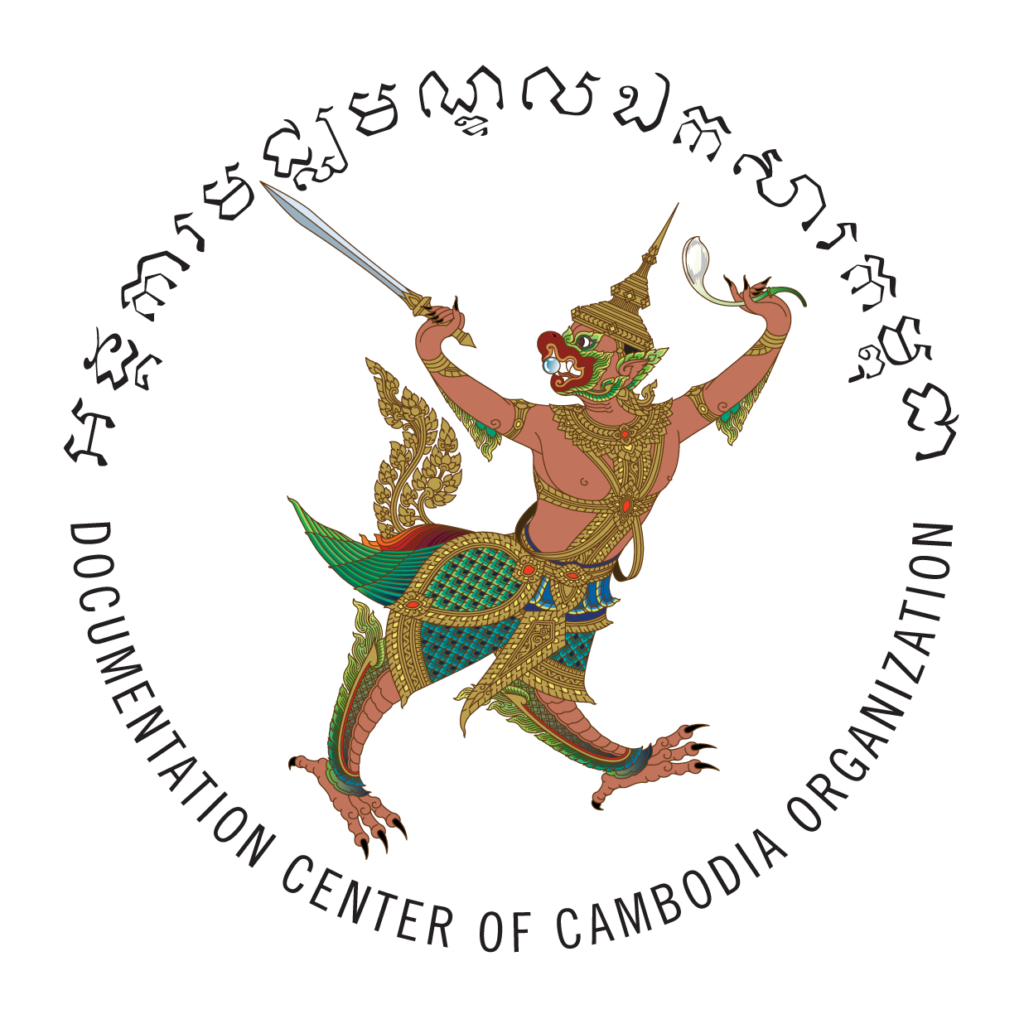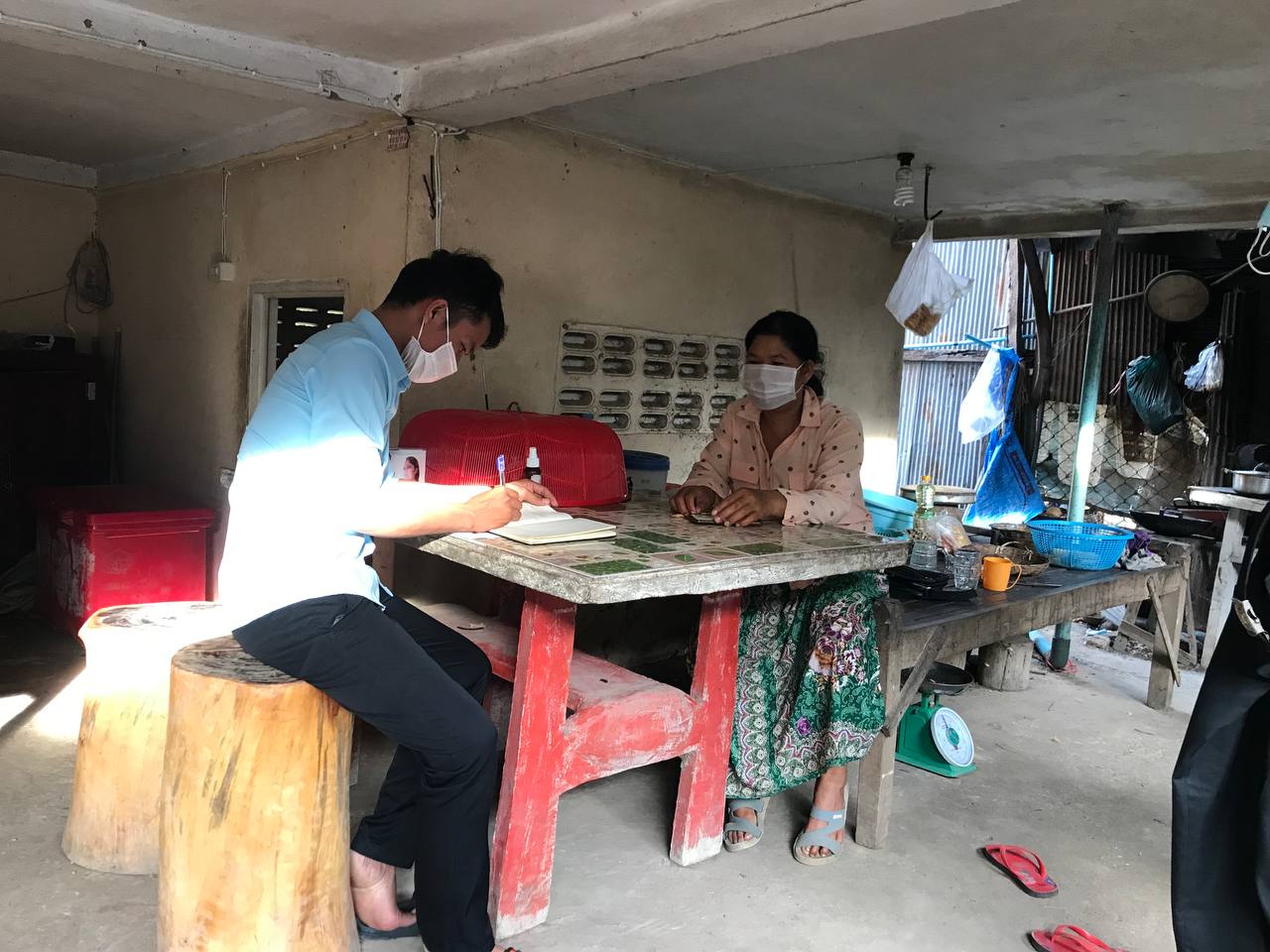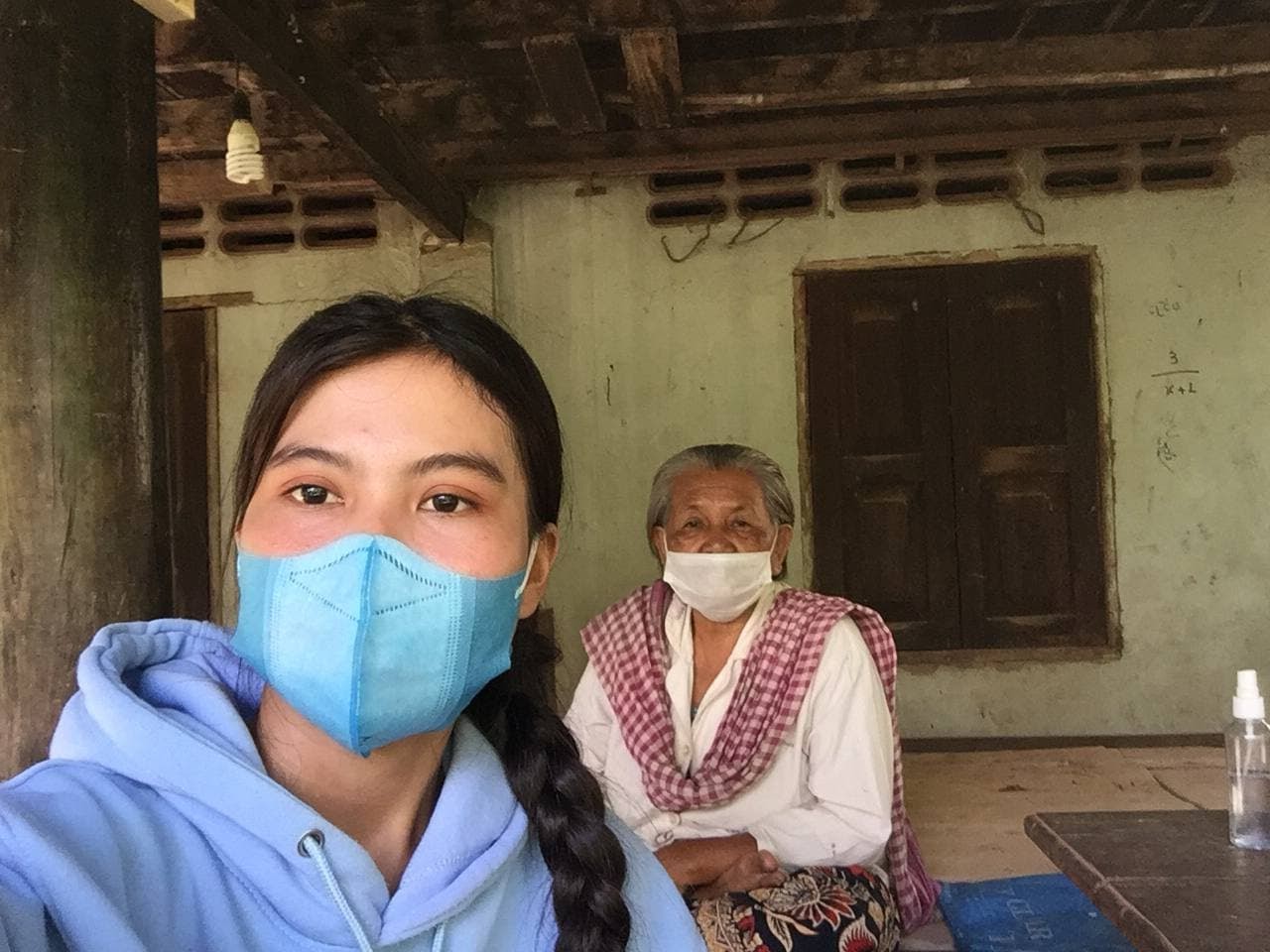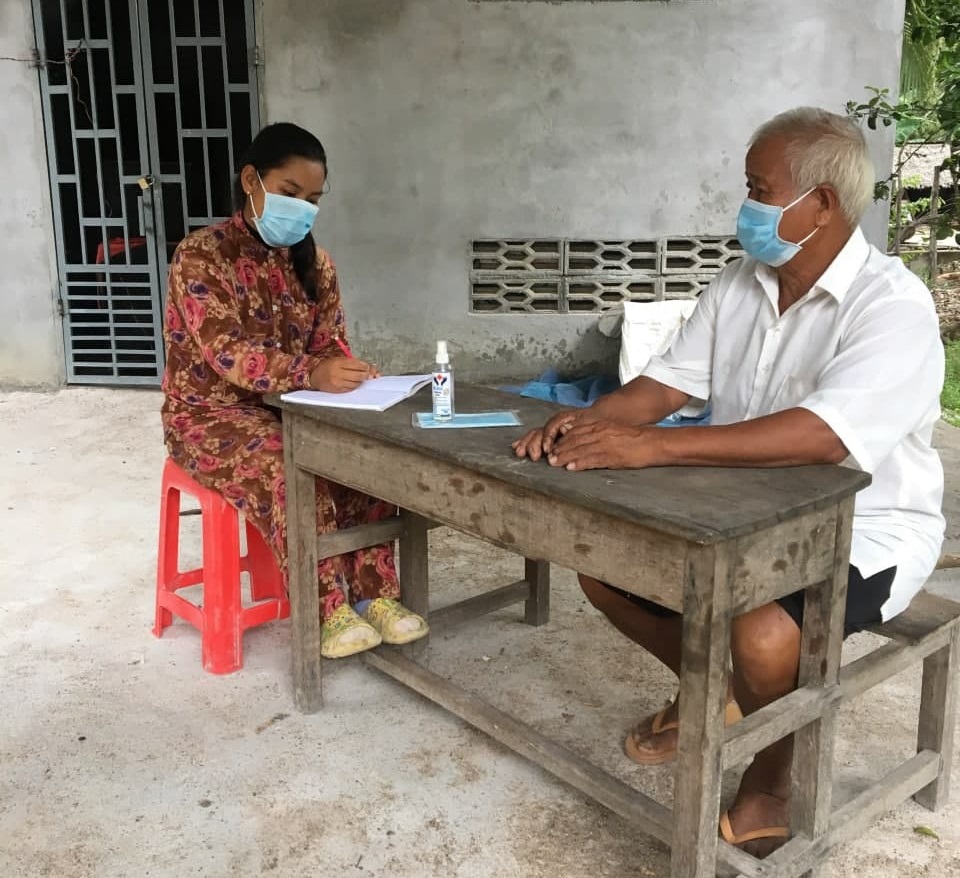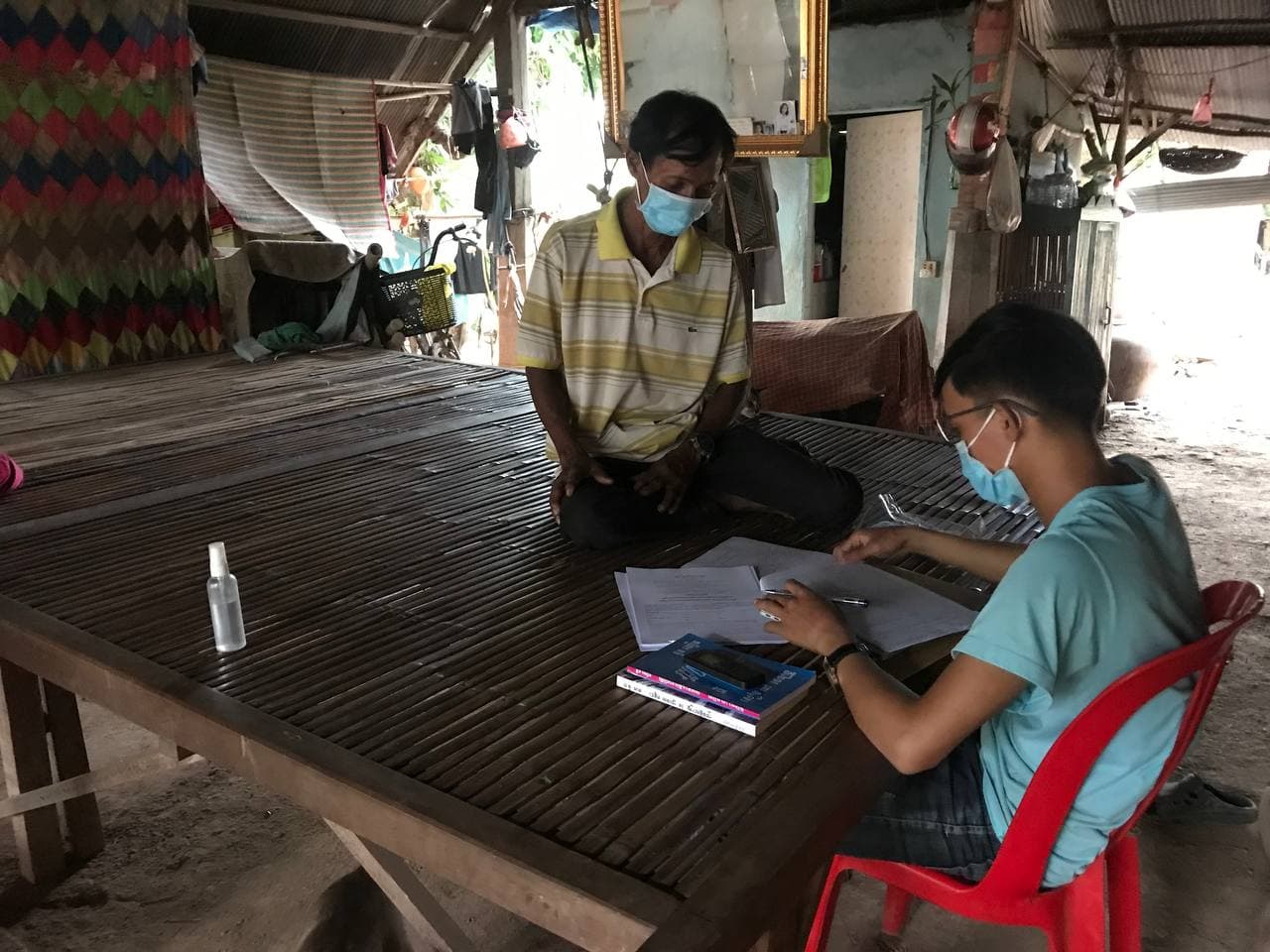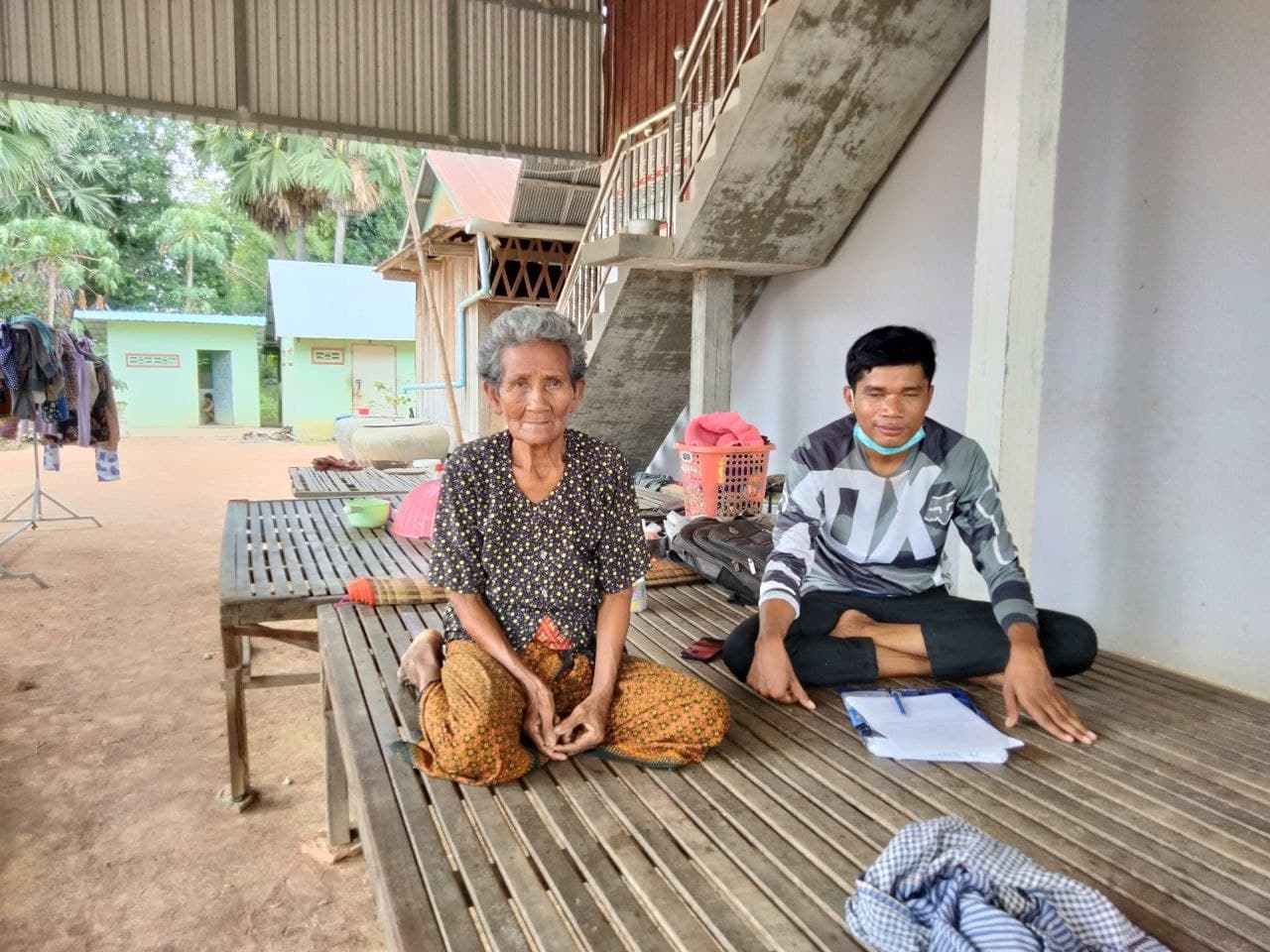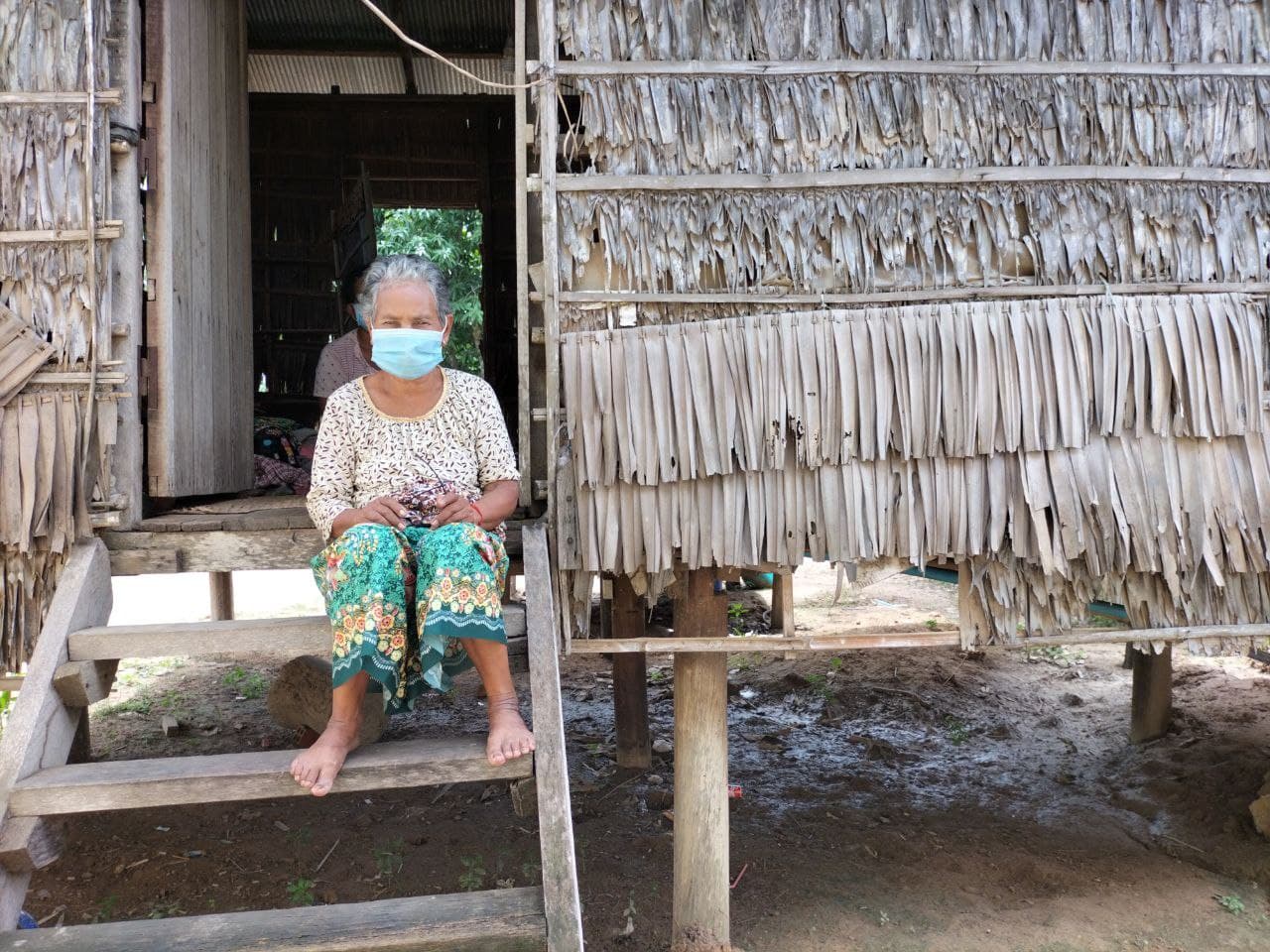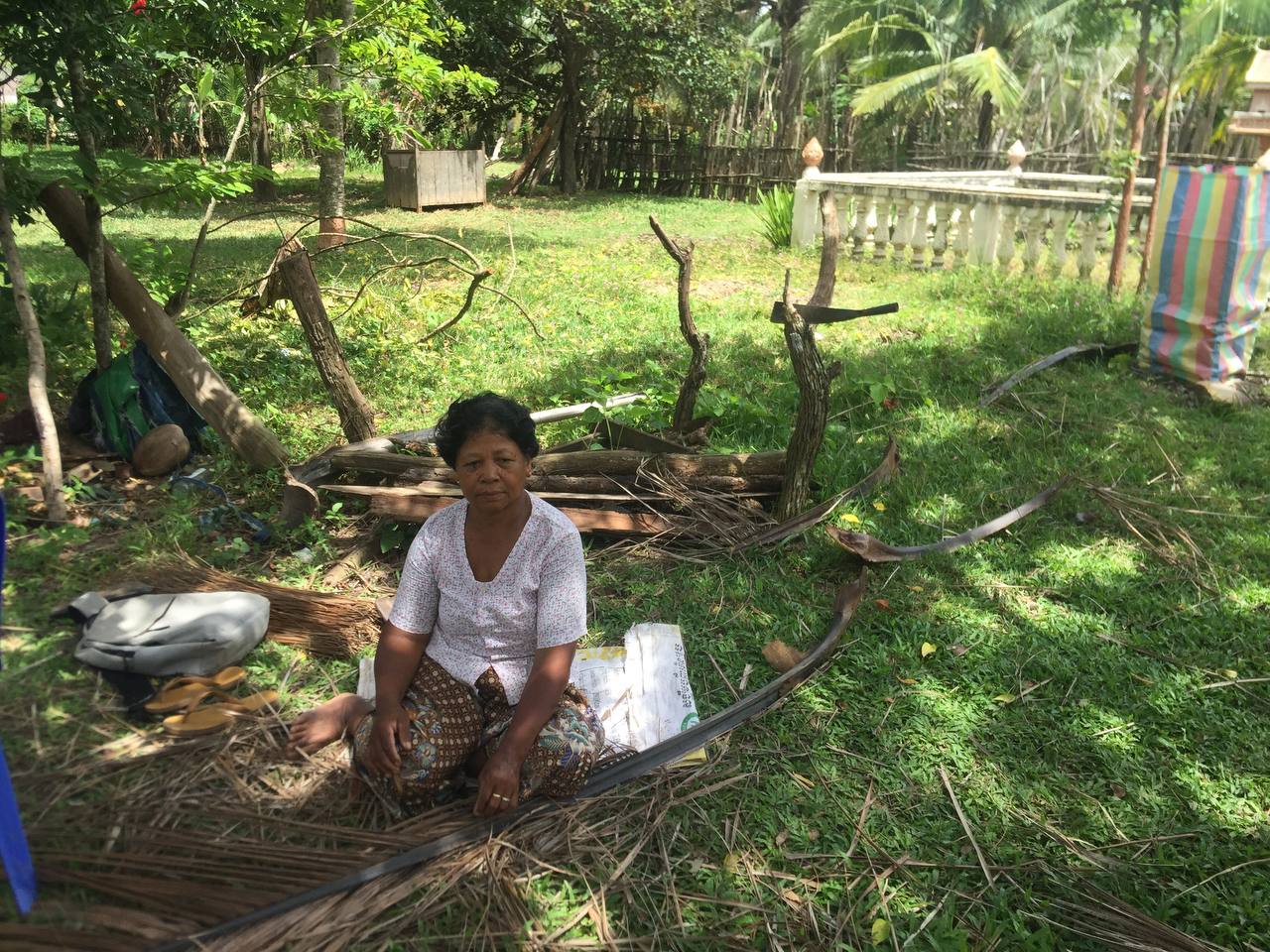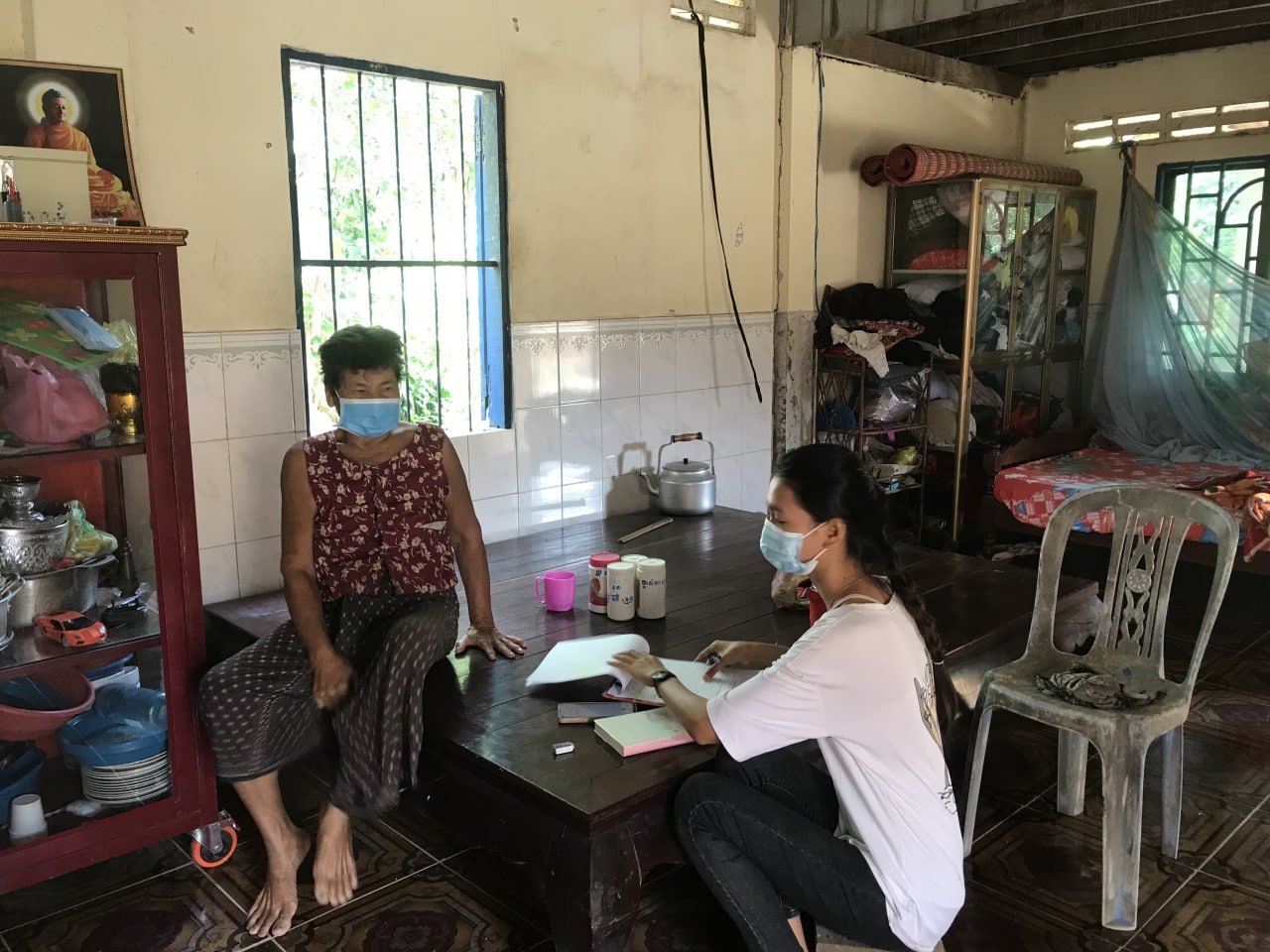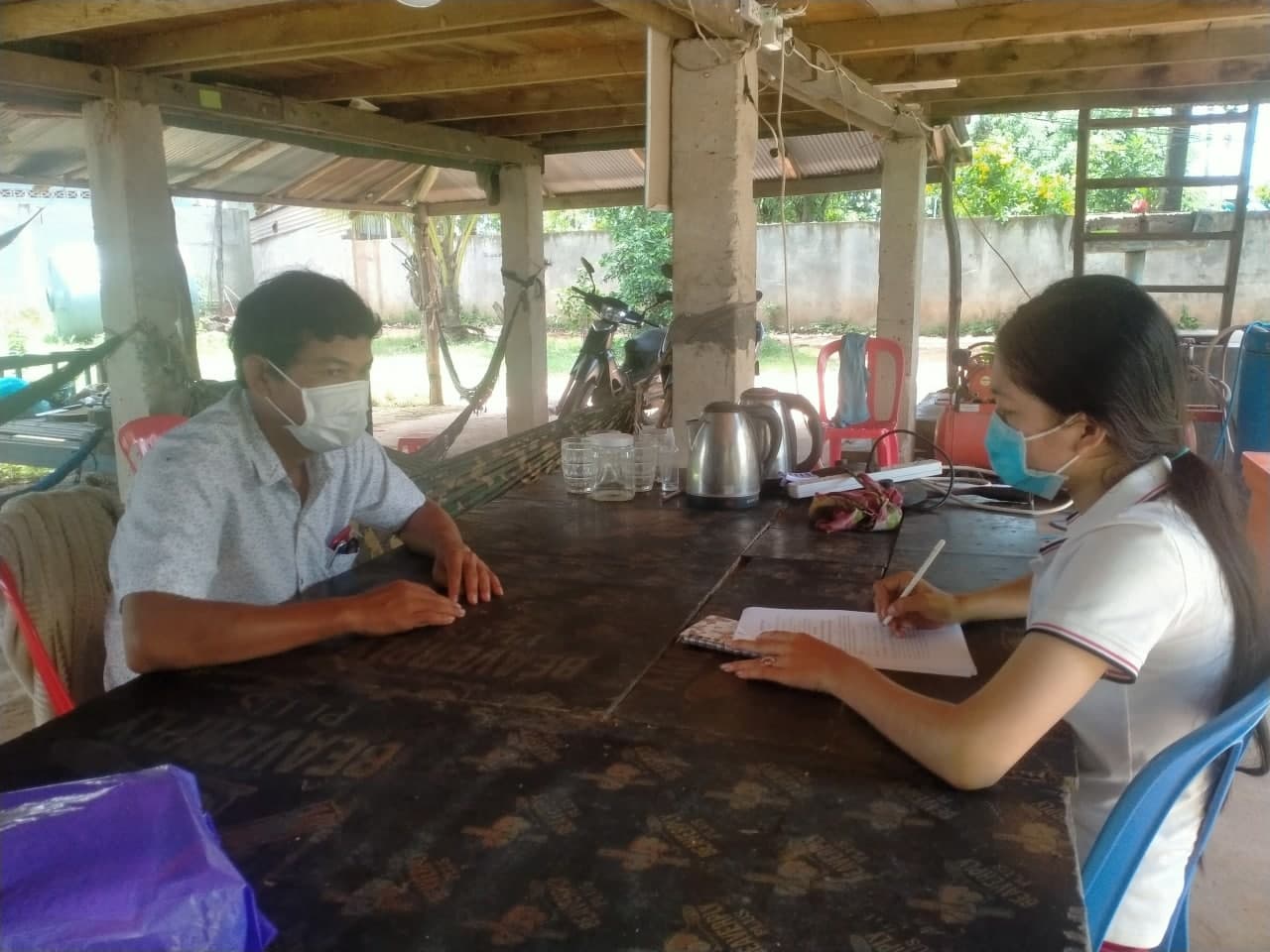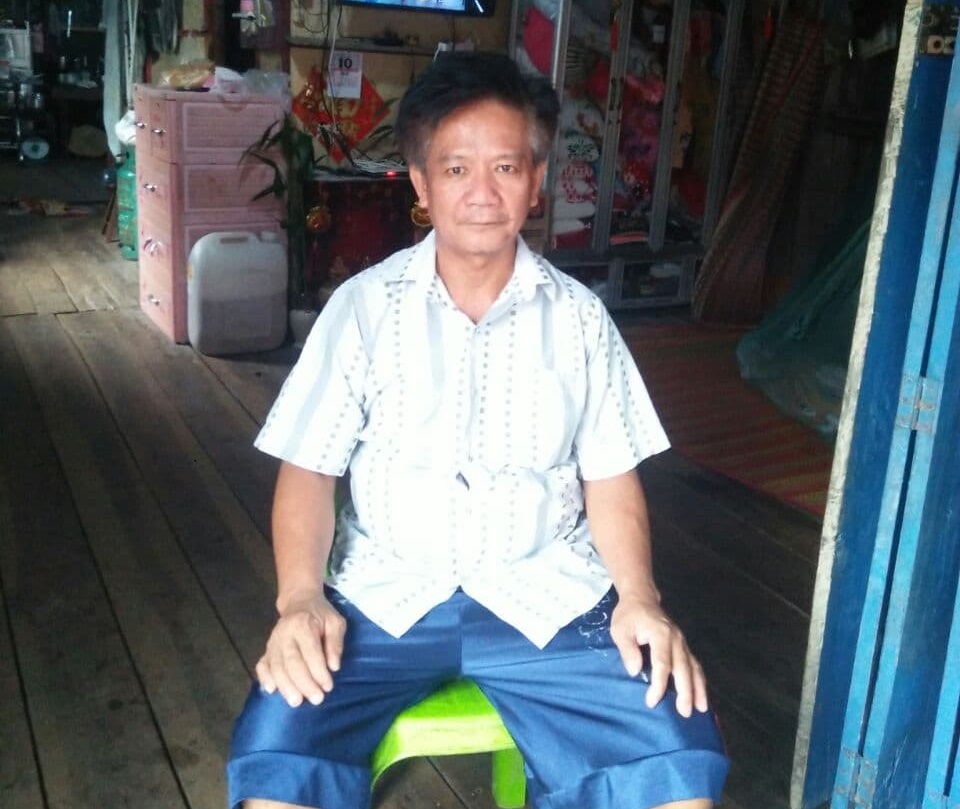Advancing the Rights and Improving the Conditions of the Health of Khmer Rouge Survivors
‘Although two million were killed by the Khmer Rouge, five million more survived to tell their story.’ Youk Chhang, Director of Documentation Center of Cambodia
To improve the welfare of Khmer Rouge survivors and the disabled through targeted interventions that raise public health awareness and access to public health services for survivors and the disabled, as well as provide field research on survivor and disabled welfare conditions, particularly in remote communities, which will inform future development assistance packages to these populations and communities.
Survivors of the Khmer Rouge period and disabled people are among the most vulnerable people in Cambodia because of their health conditions, disabilities, poor education and socio-economic status compared to the rest of the country.
Photo caption: Staff of the Documentation Center of Cambodia (DC-Cam), (far left) Dr. Demy Reyes and (far right) Kim Sovandany, home visit to provide primary health care for the former complainants and civil parties to the Khmer Rouge Tribunal at Lor-lork Sar Thmey Pagoda, Pursat province in April 2018. The home visit is part of DC-Cam’s initiative to study the conditions of the health of Khmer Rouge survivors, funded by the United States Agency for International Development (USAID), focusing on providing health education and consultation on the physical health to survivors of Khmer Rouge regime nationwide, utilizing well-equipped mobile health informative mini vans. This aims at prolonging their lives to enable them to share their experiences from the Khmer Rouge period with the next generations of Cambodia and the world, fueling the need for genocide education, which prevents such inhumane crimes from reoccurrence. It is important to note that there are five common diseases that the Khmer Rouge survivors encounter, namely 1) Hypertension; 2) Heart Disease; 3) Diabetes Mellitus; 4) COPD and PTB; and 5) Breast Cancer. Photo by Sori Joshua Manh/Documentation Center of Cambodia Archives
ការលើកកម្ពស់សិទ្ធិ និងការធ្វើឲ្យប្រសើឡើងនូវស្ថានភាព សុខភាពរបស់អ្នករស់រានមានជីវិតពីរបបខ្មែរក្រហម
«ថ្វីត្បិតតែប្រជាជនកម្ពុជាប្រមាណជាង២លាននាក់ ត្រូវបានបាត់ បង់ជីវិតក្នុងរបបខ្មែរក្រហម យ៉ាងណាក្តី ក៏នៅមានអ្នករស់រានមាន ជីវិតពីរបបនេះប្រមាណជាង៥លាននាក់ទៀតបន្តរៀបរាប់រឿងរ៉ាវជីវិតរបស់ខ្លួន»ឆាំង យុ, នាយកមជ្ឈមណ្ឌលឯកសារកម្ពុជា
បុគ្គលិកមជ្ឈមណ្ឌលឯកសារកម្ពុជា,(រូបខាងឆ្វេងបង្អស់) វិជ្ជបណ្ឌិត ដេមី រេយស៍ និង(រូបខាងស្តាំបង្អស់) គឹម សុវណ្ណដានី, ចុះសួរសុខ ទុក្ខតាមមូលដ្ឋាន និងផ្តល់សេវាថែទាំសុខភាពបឋម ជូនដល់អតីត អ្នកដាក់ពាក្យបណ្តឹង និងដើមបណ្តឹងរដ្ឋប្បវេណីរបស់សាលាក្តី ខ្មែរក្រហម នៅឯវត្តលលកសថ្មី ស្ថិតក្នុងខេត្តពោធិ៍សាត់ នាខែ មេសា ឆ្នាំ២០១៨។ ការចុះសួរសុខទុក្ខតាមមូលដ្ឋាន គឺជាផ្នែកមួយ នៃការផ្តួចផ្តើមរបស់មជ្ឈមណ្ឌលឯកសារកម្ពុជា ដែលទទួលបាន ហិរញ្ញប្បទានពីទីភ្នាក់ងារសហរដ្ឋអាមេរិកសម្រាប់ការអភិវឌ្ឍអន្តរជាតិ ដើម្បីសិក្សាអំពីស្ថានភាពសុខភាពរបស់អ្នករស់រានមានជីវិត ពីរបបខ្មែរក្រហម ដោយផ្តោតលើការអប់រំ និងពិគ្រោះយោបល់អំពី បញ្ហាសុខភាព ដល់អ្នករស់រានមានជីវិតពីរបបខ្មែរក្រហម នៅ ទូទាំងប្រទេសកម្ពុជា តាមរយៈការប្រើប្រាស់រថយន្តចល័តខ្នាតតូច បំពាក់ទៅដោយបរិក្ខាសុខាភិបាលបឋម គ្រប់គ្រាន់។ សកម្មភាព នេះធ្វើឡើងក្នុងគោលបំណង ពន្យារអាយុជីវិតរបស់អ្នករស់រាន មានជីវិត ពីរបបខ្មែរក្រហម ដើម្បីឲ្យបុគ្គលទាំងនោះអាចបន្តចែក រំលែកបទពិសោធន៍ជីវិតរបស់ខ្លួនក្នុងរបបនេះទៅកាន់មនុស្សជំនាន់ក្រោយរបស់ប្រទេសកម្ពុជា និងលើពិភពលោក ដោយគាំទ្រដល់ ការអំរំពីអំពើប្រល័យពូជសាសន៍ សំដៅដល់ការទប់ស្កាត់នូវអំពើ ឧក្រិដ្ឋកម្មអមនុស្សធម៌នានាពីការកកើតជាថ្មីម្តងទៀត។ គួរំលឹកដែរថា ជាទូទៅអ្នករស់រានមានជីវិតពីរបបខ្មែរក្រហម តែងពើបប្រទះនូវជំងឺ៥ប្រភេទរួមមានគឺ៖ ១) ជំងឺលើសឈាម ២) ជំងឺបេះដូង ៣) ជំងឺទឹកនោមផ្អែម ៤) ជំងឺស្ទះផ្លូវដង្ហើមរាំរ៉ៃ និងជំងឺរបេងសួត និង៥) ជំងឺមហារីកសុដន់។
រូបថតដោយ សូរី ចូស្ស័រ ម៉ាញ បណ្ណសាមជ្ឈមណ្ឌលឯកសារកម្ពុជា
